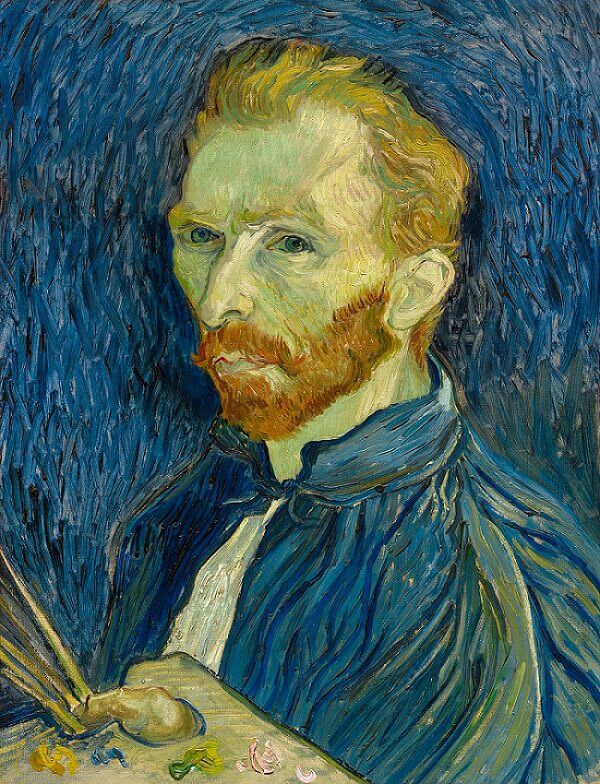Self Portrait, 1889 by Vincent van Gogh

The pervading blue - warmer, more violet, in the background, cooler in the clothes - shapes a mood that we cannot name or easily approximate in words, but of which the inward-pointing nature is clear. Not only is the blueness shared by the costume and the "abstract" surroundings, but the live brushwork forming this environment follows in its interwoven traces the changing edges of the head like a halo around it; at the same time it conforms in its vehement flow to the impassioned rhythms of the strokes that model the costume and the hair.
Out of a dark hollow in the center of this blue emerges the head with a glowing intensity - the crescent of the hair and beard is like the moon in The Starry Night. The face is mostly in shadow, a beautifully painted transparent shadow, rich in greens and blues, a dark film through which peer the red-rimmed eyes, probing and sad. Painting the hair, the mustache and beard, Van Gogh forgets the shadow, giving to these parts their full intensity as exceptional luminous colors with interspersed greens, madders, and reds. A light shadow stream, bridged by a knot, rises from the upward-thrust, obtuse edge of the palette, which echoes the face. Here the colors of the painting are laid out in a horizontal line, a surprising adaptation to the edge of the canvas, in defiance of the perspective of the palette itself.
The brushes emerge from it like the lines of the smock, forming a fanwise succession from the violet patch below to the wedge of background above - triangular shapes repeated and inverted in the areas beyond, and culminating in the pathetic region of the right eye. The head turned to its right, together with the palette, gives to that side a more abrupt, constricted, tense quality; the other half is rounded and continuous in its forms. At the same time van Gogh, with an approach to classic sensibility in his new curvilinear style, has continued the hollow edge of the face in the line of the right shoulder, producing by this larger crescent form a hidden symmetry of the two sides of the head and shoulders in a three-quarter pose.
This portrait in its jeweled perfection and depth of feeling permits us to measure Van Gogh's great advance since the last of his Paris portraits; it corresponds to a deeper self-insight as well as to enormous growth in power of expression.




















